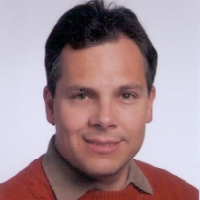Profile
Education: Theoretical Physics and Mathematics (Uni Freiburg, Switzerland), Nuclear Power Plant Technology (ETHZ and EPFL.), Mechanical Engineering Science (University of Applied Sciences Burgdorf)
Employment: since 1992 PAUL SCHERRER INSTITUT (CH); 1986-1992 KISTLER GROUP, R&D Department (CH); 1981-1986 SWISS FEDERAL INSTITUT FOR REACTOR RESEARCH (EIR) and EUROPEAN LABORATORY FOR PARTICLE PHYSICS (CERN) (CH)
Abstract
Non-destructive evaluation of RPV embrittlement by means of the Thermoelectric Power Method
Nondestructive evaluation (NDE) methods are widely used for inspecting safety relevant components in nuclear power plants. However, most of these NDE-methods are optimized and applied for the detection of existing cracks, but there is still no approved NDE method for the evaluation of the embrittlement of RPV steels, therefore such NDE methods are highly required. In the running H2020 project NOMAD, Ultrasonic Scattering, Electric Resistivity, Thermoelectric and Magnetic Barkhausen Noise, Non-Linear Harmonics Analysis, Micromagnetic Multiparameter NDE methods are under development, with the goal to measure neutron irradiation induced material embrittlement of RPVs through the cladding. I will present the method and results gained by the Thermo-Electric Power Method (TEPM) developed at the Paul Scherrer Institut (PSI) in the frame of NOMAD. This method uses the change of the Seebeck Coefficient (SC) as an indicator for the material embrittlement. A clear almost linear correlation between the shift of the Nil-Ductile-Transition-Temperature (NDTT) and the change of the SC was observed. However, as all methods under investigation, the TEPM suffers from the fact that the fracture toughness of steel depends upon several irradiation effects, such as defects in the FE-matrix, precipitation of Cu-enriched clusters and segregation of P atoms at grain boundaries, having different influence on the SC. A further obstacle to apply the TEPM for the quantification of material embrittlement is that other factors, such as ambient conditions e.g. electro-magnetic induction, temperature, humidity and surface quality may influence the required very precise (in the range of nV/K) measurement of the SC.
- Markus Niffenegger
Paul Scherrer Institut (PSI), Nuclear Energy and Safety Department, Laboratory for Nuclear Materials
CH - https://www.psi.ch
Email

